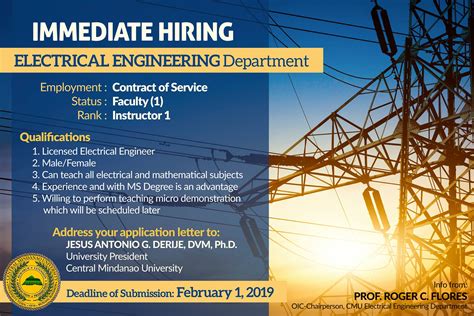Introduction to Electrical Engineering with Rolf Ostergaard
Electrical engineering is a field that deals with the study and application of electricity, electronics, and electromagnetism. It is a diverse and constantly evolving discipline that plays a crucial role in shaping our modern world. From the design of power systems and communication networks to the development of cutting-edge technologies, electrical engineers are at the forefront of innovation.
Rolf Ostergaard is a renowned expert in the field of electrical engineering, with years of experience in both academia and industry. He has designed and taught numerous courses that cover the fundamentals of electrical engineering, as well as advanced topics in areas such as power systems, control systems, and signal processing.
Why Study Electrical Engineering with Rolf Ostergaard?
Studying electrical engineering with Rolf Ostergaard offers several advantages:
- Expertise: Rolf Ostergaard is a highly experienced and knowledgeable instructor who has a deep understanding of the subject matter.
- Practical Approach: The courses are designed to provide a balance between theory and practical applications, ensuring that students gain hands-on experience.
- Comprehensive Curriculum: The courses cover a wide range of topics, from the basics of circuit analysis to advanced topics in power systems and control systems.
- Engaging Teaching Style: Rolf Ostergaard is known for his engaging and interactive teaching style, which makes learning complex concepts easier and more enjoyable.
Fundamentals of Electrical Engineering
Circuit Analysis
Circuit analysis is a fundamental skill in electrical engineering. It involves analyzing and solving electrical circuits to determine voltages, currents, and power. Rolf Ostergaard’s courses cover the following topics in circuit analysis:
- Ohm’s Law
- Kirchhoff’s Laws
- Series and Parallel Circuits
- Nodal and Mesh Analysis
- Thevenin’s and Norton’s Theorems
Example: Solving a Series Circuit
Consider the following series circuit:
+---R1---+---R2---+---R3---+
| | | |
+--------+--------+--------+
10 V 20 Ω 30 Ω
To find the current flowing through the circuit, we can use Ohm’s Law:
I = V / R_total
= 10 V / (20 Ω + 30 Ω)
= 0.2 A
Electronics
Electronics is another essential area of electrical engineering. It deals with the design and analysis of electronic circuits and devices. Rolf Ostergaard’s courses cover the following topics in electronics:
- Semiconductor Devices (Diodes, Transistors)
- Operational Amplifiers
- Digital Logic Circuits
- Analog and Digital Converters
Example: Diode Rectifier Circuit
A diode rectifier circuit is used to convert AC voltage to DC voltage. Here’s a simple half-wave rectifier circuit:
+-----+
AC | | +
Input--|Diode|---+---Load---
| | -
+-----+
The diode allows current to flow only in one direction, effectively blocking the negative half of the AC waveform and producing a pulsating DC output.
Electromagnetics
Electromagnetics is the study of the interaction between electric and magnetic fields. It forms the basis for many applications in electrical engineering, such as transformers, motors, and antennas. Rolf Ostergaard’s courses cover the following topics in electromagnetics:
- Electric and Magnetic Fields
- Maxwell’s Equations
- Electromagnetic Waves
- Transmission Lines
- Antennas
Example: Calculating the Magnetic Field of a Current-Carrying Wire
The magnetic field B at a distance r from a long, straight wire carrying a current I can be calculated using the Biot-Savart Law:
B = (μ_0 * I) / (2πr)
Where:
– B is the magnetic field strength (in Tesla)
– μ_0 is the permeability of free space (4π × 10^-7 N/A^2)
– I is the current flowing through the wire (in Amperes)
– r is the distance from the wire (in meters)

Advanced Topics in Electrical Engineering
Power Systems
Power systems involve the generation, transmission, and distribution of electrical power. Rolf Ostergaard’s courses cover the following topics in power systems:
- Power Generation (Conventional and Renewable Sources)
- Power Transmission and Distribution
- Power System Analysis and Stability
- Power Quality and Protection
Example: Power Transmission Line Losses
Power transmission lines have inherent losses due to resistance, which can be calculated using the following formula:
P_loss = I^2 * R
Where:
– P_loss is the power loss (in Watts)
– I is the current flowing through the line (in Amperes)
– R is the resistance of the line (in Ohms)
To minimize losses, power transmission is typically done at high voltages and low currents.
Control Systems
Control systems are used to regulate and automate various processes in electrical engineering applications. Rolf Ostergaard’s courses cover the following topics in control systems:
- Feedback Control Systems
- PID Controllers
- State-Space Analysis
- Stability and Performance Analysis
Example: PID Controller
A PID (Proportional-Integral-Derivative) controller is a common type of feedback controller. It calculates the error between the desired setpoint and the actual output, and applies a correction based on proportional, integral, and derivative terms.
The PID controller equation is:
u(t) = K_p * e(t) + K_i * ∫e(t)dt + K_d * de(t)/dt
Where:
– u(t) is the control signal
– e(t) is the error signal (setpoint – actual output)
– K_p, K_i, and K_d are the proportional, integral, and derivative gains, respectively
Signal Processing
Signal processing deals with the analysis, modification, and synthesis of signals. It has applications in areas such as audio and image processing, communications, and biomedical engineering. Rolf Ostergaard’s courses cover the following topics in signal processing:
- Fourier Analysis
- Sampling and Quantization
- Digital Filters
- Spectral Analysis
Example: Fourier Transform
The Fourier Transform is a mathematical tool used to decompose a signal into its frequency components. The continuous Fourier Transform of a signal x(t) is given by:
X(f) = ∫x(t) * e^(-j*2πft) dt
Where:
– X(f) is the frequency-domain representation of the signal
– x(t) is the time-domain signal
– f is the frequency (in Hz)
– j is the imaginary unit (√-1)
The inverse Fourier Transform can be used to reconstruct the time-domain signal from its frequency-domain representation:
x(t) = ∫X(f) * e^(j*2πft) df

Frequently Asked Questions (FAQ)
-
Q: What are the prerequisites for taking Rolf Ostergaard’s electrical engineering courses?
A: While there are no strict prerequisites, a strong foundation in mathematics (particularly calculus and linear algebra) and physics is recommended. Familiarity with basic programming concepts can also be helpful. -
Q: Are the courses suitable for beginners, or are they primarily aimed at advanced learners?
A: Rolf Ostergaard’s courses cater to a wide range of learners, from beginners to advanced students. The courses are structured in a way that allows students to progressively build their knowledge and skills. -
Q: Do the courses include practical, hands-on projects?
A: Yes, the courses include practical projects and assignments that allow students to apply the concepts they have learned. These projects help reinforce understanding and provide valuable hands-on experience. -
Q: Are there any software tools or programming languages that students should be familiar with?
A: Familiarity with programming languages such as C, C++, or Python can be beneficial, as they are commonly used in electrical engineering applications. Additionally, knowledge of simulation software like MATLAB or Simulink can be advantageous. -
Q: How long does it typically take to complete the courses?
A: The duration of the courses varies depending on the specific course and the student’s learning pace. On average, each course can take several weeks to a few months to complete, assuming a regular study schedule.

Conclusion
Electrical engineering is a fascinating and rewarding field that offers endless opportunities for innovation and growth. Rolf Ostergaard’s courses provide a comprehensive and engaging introduction to the fundamentals of electrical engineering, as well as advanced topics in areas such as power systems, control systems, and signal processing.
By studying with Rolf Ostergaard, students can benefit from his expertise, practical approach, and engaging teaching style. The courses are designed to provide a balance between theory and practical applications, ensuring that students gain a deep understanding of the subject matter and develop valuable hands-on skills.
Whether you are a beginner looking to start your journey in electrical engineering or an advanced learner seeking to expand your knowledge, Rolf Ostergaard’s courses offer a world-class learning experience that can help you achieve your goals and succeed in this exciting field.

No responses yet